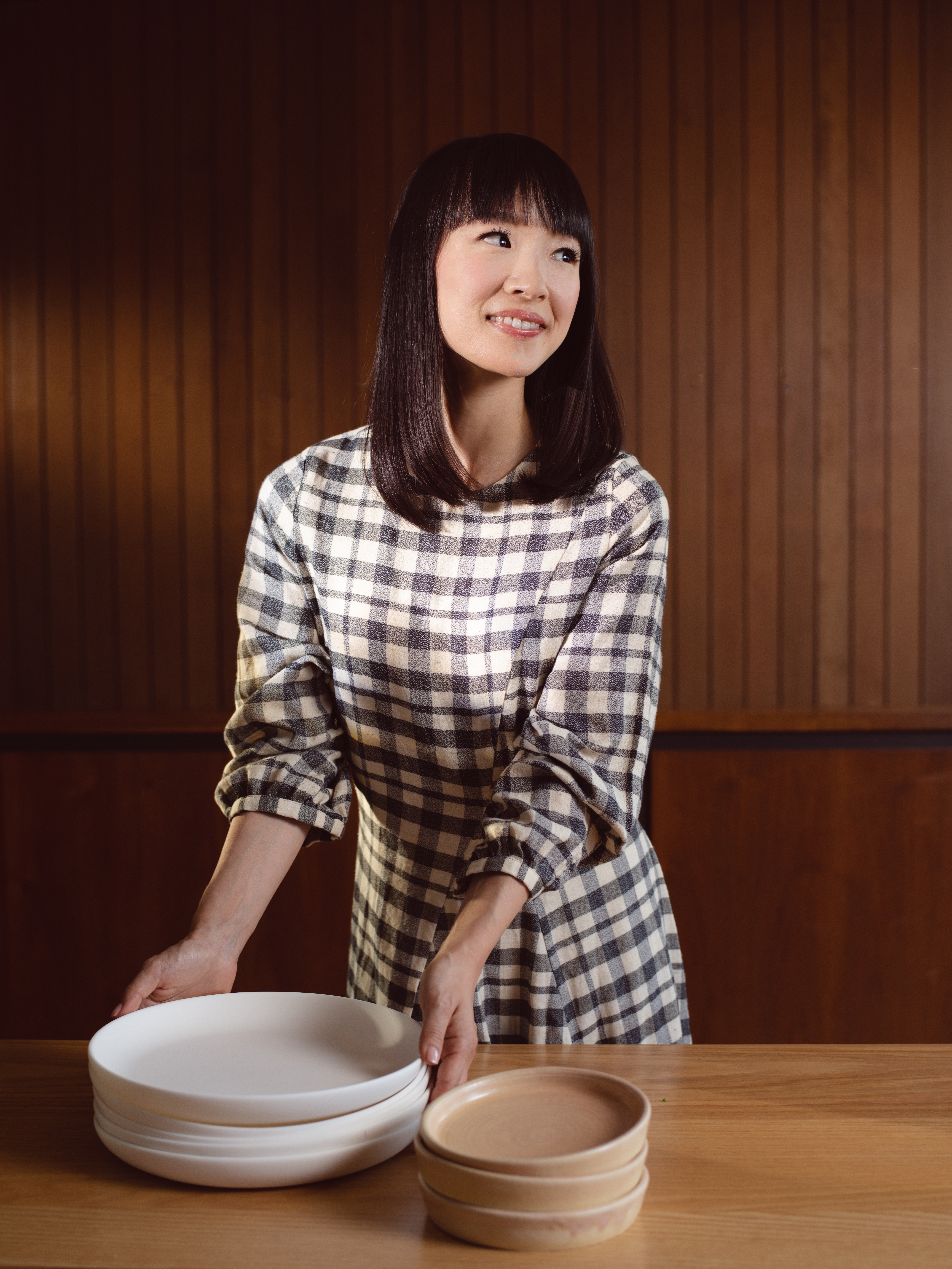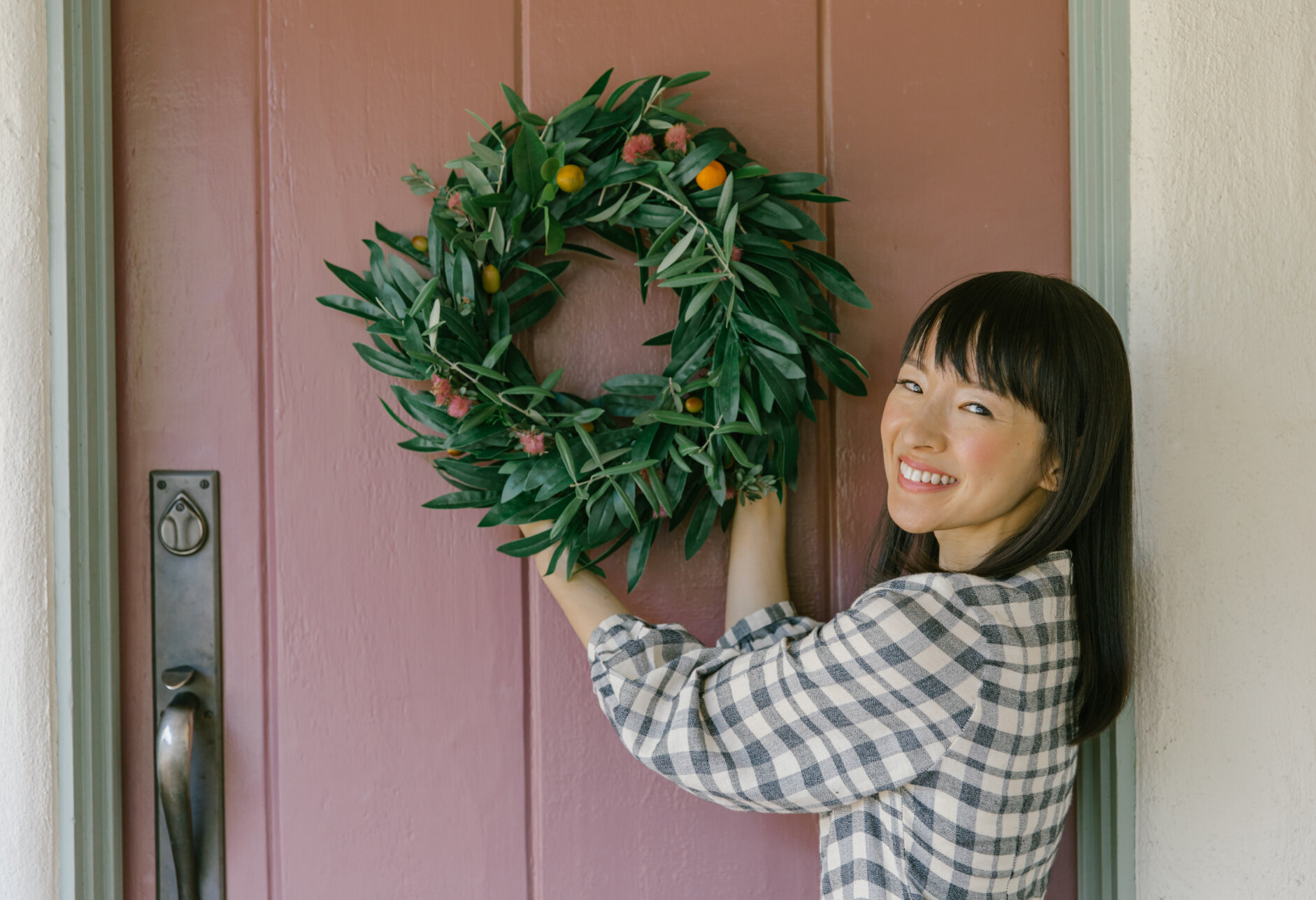The moment temperatures dip in the Northern Hemisphere, shelves fill with sparkle and soft, cozy items: plush blankets, glittery reindeer, snow-dusted garlands, pine-scented candles. As our hearts and minds fill with sentimental memories and excitement about seasonal family gatherings, it’s natural to get swept up in the moment — and even easier to overdo it.
But the KonMari philosophy reminds us that joy isn’t about quantity or seasonal trends; it’s about connection and intention.
Mindful holiday decorating means selecting pieces that truly delight you, storing them with care and creating space to enjoy each season fully — year after year — free from clutter or guilt. We’ve created this guide to help you approach this holiday season with a sense of curiosity and care, so you can lean into what matters and create even more memories that spark joy.
Start With a Holiday “Joy Check”
As soon as October arrives, many stores fill with the latest batches of holiday decorations, including Thanksgiving place settings, twinkle lights, and shelves and shelves of Christmas ornaments.
But before you automatically place a ceramic snowman or faux wreath into your cart, pause. It’s easy to slip from acquiring one or two new items that spark joy into excess shopping, especially if you haven’t yet reviewed the holiday decorations you stored away last year.
It’s impossible to avoid seeing holiday decorations in stores at this time of year, but you can control how you respond to items you see. Each time you’re drawn to a new piece of holiday decor, hold it in your hands. Then, try asking yourself the following questions:
- Do I love this piece, or am I caught in the “seasonal sparkle storm”? (Like any other item, the KonMari Method asks that you feel a sense of innate joy when physically holding the item.)
- Will I enjoy seeing this again next year?
- Do I already own something that serves the same purpose or brings the same feeling to my home?
These answers should help you skip over items that give you a brief sense of excitement but won’t bring long-term joy. And here’s an unexpected positive: The more mindfully you shop, the fewer items you’ll need to pack away and store in January.
Thanksgiving: Put Gratitude into Practice
Thanksgiving decor is often warm and subtle, featuring candles, greenery, table linens, and natural textures.
Before bringing new pieces home, shop your own home first. By revisiting and rediscovering what you love, you’re creating a true sense of tradition.
You might also create a small ritual of unpacking, editing, and expressing gratitude. Like an old friend, greet and thank each piece as you unwrap it, before you place it around your home.

You can also shop your yard, neighborhood, and local grocery. Flowers, branches, and gourds are a lovely alternative to acquiring objects that you will need to store. There’s beauty in their ephemeral nature, and many fall flowers mirror the autumnal colors of Thanksgiving decorations.
Tidy tip: After Thanksgiving, wipe down and dry everything thoroughly before storing it away. Store your Thanksgiving decorations together in one place (and label the box or bin), so next year’s setup feels effortless.
Hanukkah & Christmas: Curate With Joy
These are the holidays where decorations tend to multiply…quickly. Menorahs, ornaments, garlands, lights, dreidels, and other keepsakes collect over the years.
Take a similar approach to Thanksgiving table decorations: hold items and ask yourself the same questions listed above.
And remember that what sparks joy for you doesn’t need to look new, perfect, or even aesthetic. A painted, lop-sided macaroni ornament deserves its place in your home if it resonates with you.

When you do buy something new, be deliberate about it. Give it a proper home — one that you can return it to next holiday season. When you’re finished decorating with repeat items and new acquisitions, your home should feel like you’ve surrounded yourself with warmth and love.
Tidy tip: Another way to avoid overconsumption is to prioritize holiday activities over material possessions. Rather than buying new ornaments, why not make your own with the whole family one evening?
New Year’s Eve and Day: A Fresh Start
In Japan, New Year’s (Oshōgatsu) is one of the most important holidays of the year. It is a time for renewal, reflection, and celebration. People clean their homes from top to bottom, and hang up symbolic decorations like kadomatsu (pine and bamboo) and shimekazari (sacred straw ropes) to welcome good fortune.

You can bring that same spirit of renewal into your own home, no matter where you’re celebrating New Year’s Eve and Day this year:
- Prioritize New Year’s decor that feels understated and reusable — classic tinsel garland for the mantle or door frame, a set of candles, or a few special champagne flutes or coupes that feel festive but timeless.
- Try the Japanese tradition of cleaning your home before the new year. Doing so means you will start the new year with clarity rather than clutter.
- Use the promise of a New Year to mindfully set goals and priorities for your home and life, prioritizing meaning over objects.
Tidy Tip: For more about New Year’s traditions in Japan, here is a letter from Marie about how she observes the holiday in her own home.
In the New Year: Practice Mindful Storage
Careful storage of holiday items is an act of respect for your belongings — and for your future self. Here’s a quick checklist to bookmark for when you’re ready to pack your holiday decorations for next year.
- Edit as you undecorate. If you sighed when you saw it this year, thank it and let it go.
- Label clearly. Bins labeled by location (“Living Room – Mantel,” “Outdoor Lights”) eliminate next year’s chaos.
- Keep like with like. Store ornaments with tree décor, menorah candles with the menorah, and table linens with their seasonal runners.
- Contain intentionally. One bin per category creates a gentle limit that keeps collections manageable.
Tidy tip: For more, we’ve written an entire KonMari Method guide to organizing and storing ornaments and other holiday decorations after the season ends.








